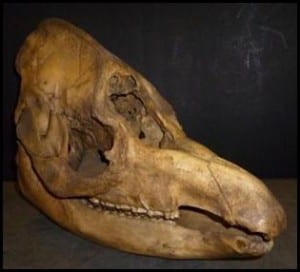Specimen of the Week: Week Ten
By Emma-Louise Nicholls, on 19 December 2011
 Freshly back from abroad (got in last night), and not just a little jet-lagged, I bring to you on this quite frankly-freezing-compared-to-Mexico morning a mammalian specimen of the week that was inspired by the beautiful jungles through which I have been trotting for the last two weeks. I hope you are already trying to guess what it is based upon the two surreptitious pieces of information I have just given you; geographical location and habitat. This week’s specimen of the week is…
Freshly back from abroad (got in last night), and not just a little jet-lagged, I bring to you on this quite frankly-freezing-compared-to-Mexico morning a mammalian specimen of the week that was inspired by the beautiful jungles through which I have been trotting for the last two weeks. I hope you are already trying to guess what it is based upon the two surreptitious pieces of information I have just given you; geographical location and habitat. This week’s specimen of the week is…
**!!!THE TAPIR!!!**
1) There are four species of tapir. Although they are all within the same genus, they were flung across the earth sometime in their evolutionary past. Three species live in Central and South America whilst one species ventured as far as southeast Asia. (The jungles of Africa apparently weren´t to their taste). The Baird’s tapir is the largest indigenous mammal in Central America.
2) The fluffy looking mountain tapir is considered a ‘living fossil’. Scientists believe the species is the remaining remnants of a tapir lineage that arose around 55 million years ago, a few million years after most of the dinosaurs famously met their demise.
3) Unlike the other three species that are varying shades of grey, the southeast Asian tapir has distinctive markings. It has a black head, shoulders and legs but a bright white rump. It is believed by some that this provides camouflage in the moonlit forest. Tapirs being nocturnal and all.
4) Tapirs are most well known for their nose. Its upper lip has been elongated into a flexible, prehensile proboscis. Like the poor man’s version of an elephant.
5) Tapirs belong to the group “odd-toed hooved mammals” (or perissodactyls to their friends) – the only other members are horses and rhinos. However tapirs have an even number of toes on their front feet (four).
If you would like to adopt a tapir skull, please get in touch at zoology.museum@ucl.ac.uk.
 Close
Close



